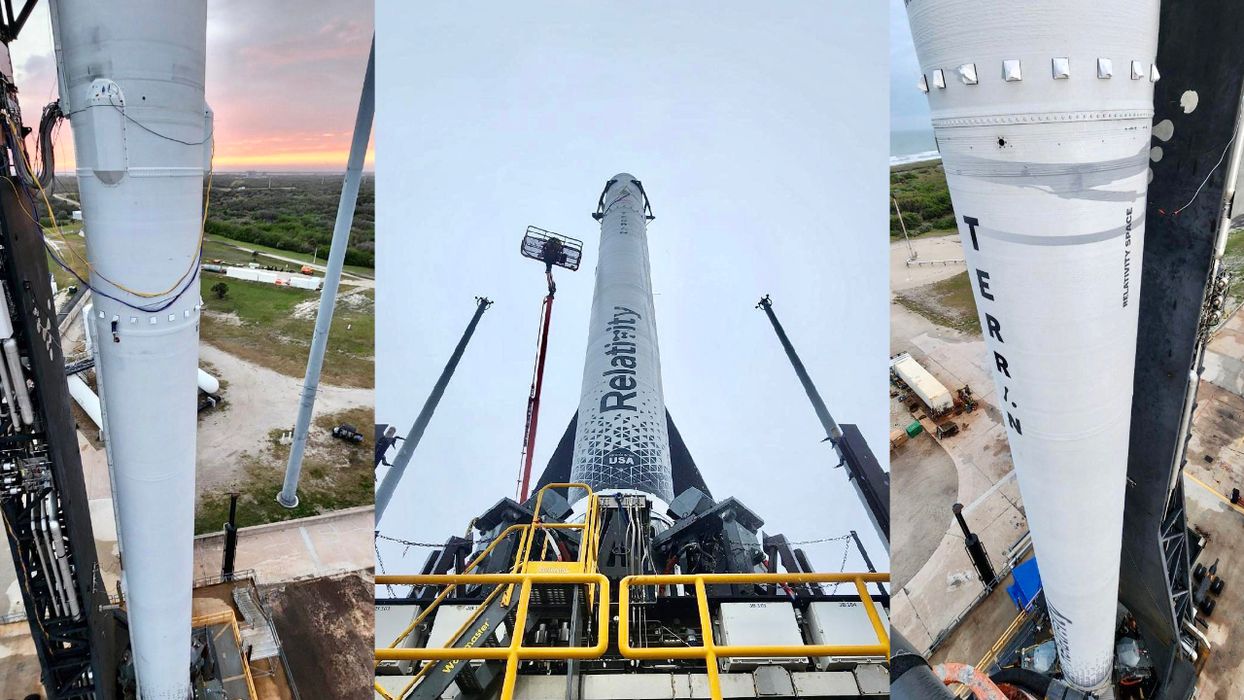
Relativity Space is nearing a key milestone, and so is 3D printing.
The company’s business is to develop and build orbital rockets, something many space startups seem to be doing lately. Most don’t survive as their dreams often “blow up”, literally.
Relativity Space is a bit different from all of the others because of their build technology: they 3D print the entire rocket. Not components, the entire thing — except for electronics and a few other items.
To do this they created a unique robotic metal 3D printing system they call “Stargate”. This device has a long reach and is able to 3D print the enormous cylindrical shapes that make up their first rocket, the Terran 1.
The news is that they are rapidly approaching the moment when they will launch this vehicle into orbit for the first time. According to Relativity Space’s Tim Ellis:
“Getting ready for final ground tests, launch feeling real. At the doorstep. Photos from our technician team hard at work up high on the rocket. We are vertical again!!”
While the launch will clearly be a milestone for Relativity Space, it will also be for the 3D printing industry. This could be the first time a major vehicle of any kind has been launched that is almost entirely 3D printed.
I see this as a moment equivalent to when the first flight critical part flew on an airplane. The difference here is that the entire structure is 3D printed.
Should this launch work and Relativity Space succeed, this opens the door to all manner of large-scale 3D printing of other vehicles and large objects. Their success would be quickly duplicated by other aerospace and rocket companies, drastically expanding the use of metal 3D printing in the industry.
We may also see the use of this approach in other vehicle types. For example, ocean-going ship makers might take advantage of the approach. That’s already been done with polymers on an experimental basis, but with metal one could envision far larger ships.
This approach is extremely advantageous. Relativity Space explains that their rocket has “100x fewer parts”, which not only simplifies production, manufacturing, assembly and certainly administrative efforts, but also lightweights the vehicle significantly.
If that wasn’t enough, Relativity Space plans to build a successor to the Terran 1 called the “Terran R”. The “R” stands for “reusable”. The company has leveraged their experience with the original rocket design to come up with one that can carry payloads to orbit and then be refueled for more missions. This should offer rock-bottom prices for customers.
Competitors will take notice of this capability and no doubt jump on the 3D printing bandwagon to join Relativity Space in 3D printing entire rockets.
This is indeed a pivotal milestone for the industry.
Via Relativity Space
